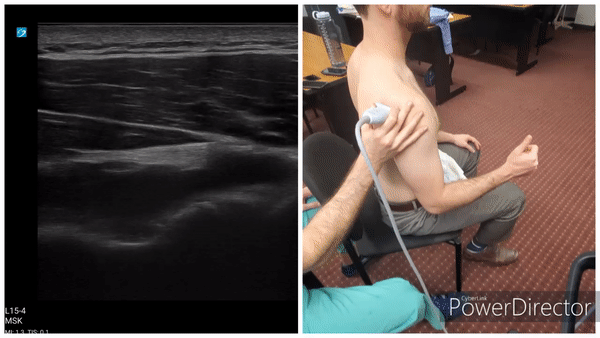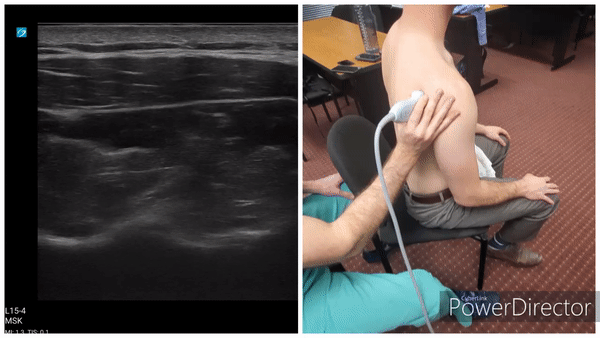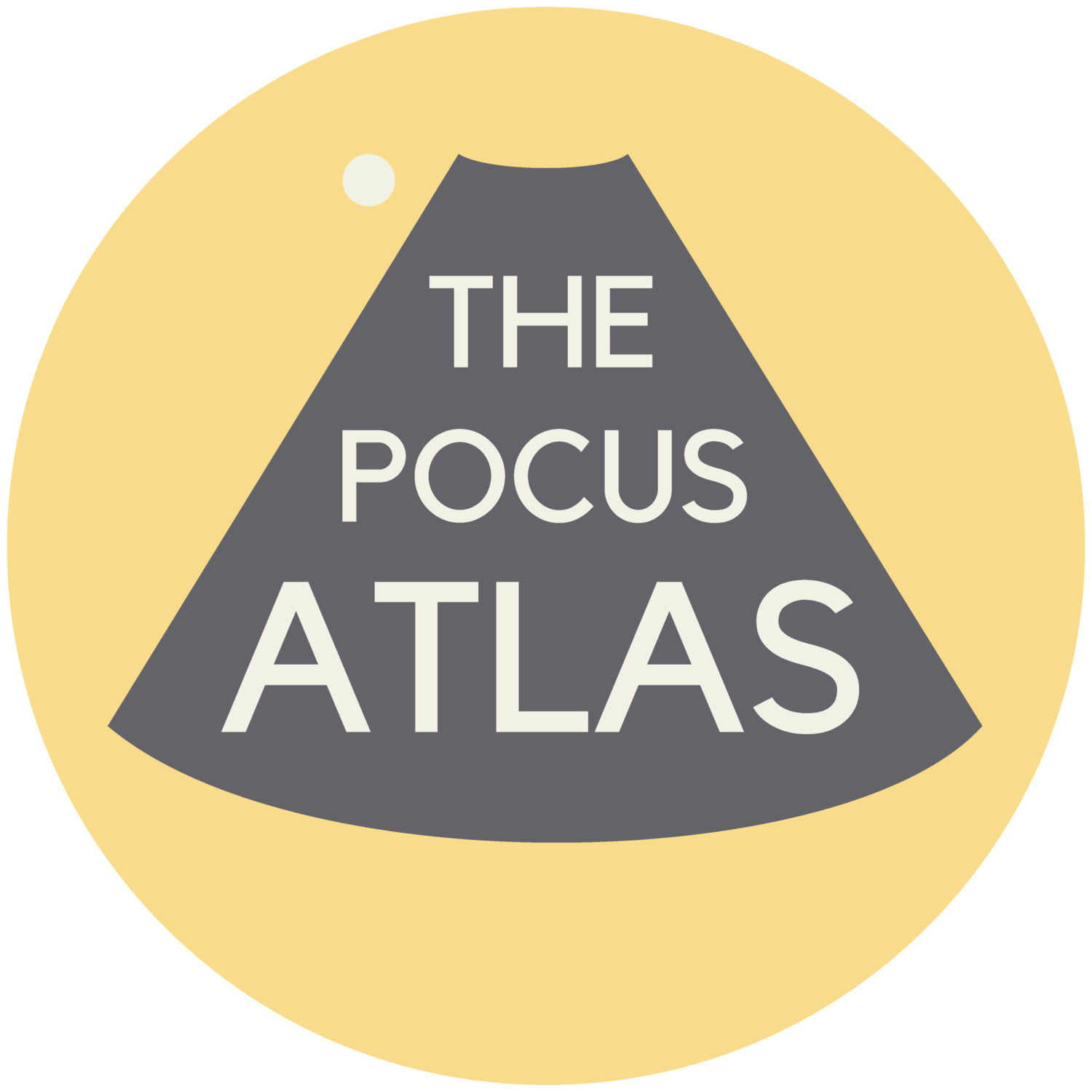
Shoulder Gallery

Supraspinatus (Long Axis)
Video Six: Supraspinatus (Long axis)
-Position: Crass position
-Location: Transducer is located sagittally over the greater tuberosity
-Scan up and down along the supraspinatus to see proximally and distally

Supraspinatus (Short Axis)
Video Eight: Supraspinatus (Short Axis)
-Position: Crass position
-Location: Rotate the transducer 90 degrees from the sagittal view over the greater tuberosity
-Scan up and down along the supraspinatus to see proximally and distally

Supraspinatus (Neutral)
Video Nine: Supraspinatus (Neutral position)
-Position: Arm flexed to 90 degrees
-Location: Transducer is placed coronally over the greater tuberosity
-Will only be able to see the distal supraspinatus tendon due shadowing from the acromion. Have the patient abduct arm to 15 degrees to see muscle contraction.

Infraspinatus (Long Axis)
Video Ten: Infraspinatus (Long axis)
-Position: Arm flexed to 90 degrees
-Location: Palpate the scapular spine then place the transducer sagittally over the scapular spine then move the transducer inferiorly. Once the infraspinatus and teres minor are identified, rotate the transducer 90 degrees to long axis.
-Have the patient externally and internally rotate the arm

Infraspinatus/Teres Minor (Long Axis)
Video Eleven: Infraspinatus/Teres Minor (Long axis)
-Position: Arm flexed to 90 degrees
-Location: Palpate the scapular spine then place the transducer sagittally over the scapular spine then move the transducer inferiorly. Once the infraspinatus and teres minor are identified, rotate the transducer 90 degrees to long axis.
-Teres minor will be thinner, superficial, and more hyperechoic

Infraspinatus / Teres Minor (Short Axis)
Video Twelve: Infraspinatus/Teres Minor (Short axis)
-Position: Arm flexed to 90 degrees
-Location: Palpate the scapular spine then place the transducer sagittally over the scapular spine then move the transducer inferiorly. Once the infraspinatus and teres minor are identified; scan medial to lateral
-Teres minor will be thinner, superficial, and more hyperechoic

Biceps Tendon/Bicipital Groove (short axis)
-Positioning: have the patient supinate their arm
-Location: Bicipital groove, found via palpation
-Hold the ultrasound transverse across the bicipital groove. Slide the probe distally along the groove’s distribution.







